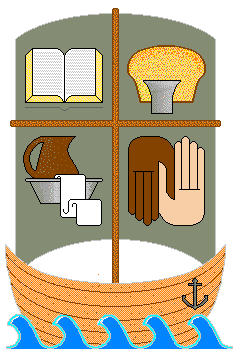“I was permitted to lift them as
they laid in a pillow-case; but
not to see them, as was contrary
to the commands he had received. They weighed about sixty pounds according to the best of
my judgment”.
“there was a book deposited, written upon gold plates, giving an account of the former inhabitants of this continent, and the source from whence they sprang” (Joseph Smith – History
Smith claims that he was not allowed to retrieve the buried plates for another four years. In verse 54 of his testimony, he related that the day he was allowed to dig up the record came on September 22, 1827. Joseph Smith’s mother, Lucy Mack Smith, remembered the day this way:
The plates were secreted about three miles from home…Joseph, on coming to them, took them from their secret place, and, wrapping them in his linen frock, placed them under his arm and started for home.
After proceeding a short distance, he thought it would be more safe to leave the road and go through the woods. Traveling some distance after he left the road, he came to a large windfall, and as he was jumping over a log, a man sprang up from behind it, and gave him a heavy blow with a gun. Joseph turned around and knocked him down, then ran at the top of his speed. About half a mile further he was attacked again in the same manner as before; he knocked this man down in like manner as the former, and ran on again; and before he reached home he was assaulted the third time. In striking the last one he dislocated his thumb, which, however, he did not notice until he came within sight of the house, when he threw himself down in the corner of the fence in order to recover his breath. As soon as he was able, he arose and came to the house. lie was still altogether speechless from fright and the fatigue of running” (History of Joseph Smith by His Mother, Lucy Smith
“These records were engraven on plates which had the appearance of gold, each plate was six inches wide and eight inches long, and not quite so thick as common tin. They were filled with engravings, in Egyptian characters, and bound together in a volume as the leaves of a book, with three rings running through the whole. The volume was something near six inches in thickness, a part of which was sealed” (History of the Church
Numerous LDS leaders and historians have concurred with Smith’s description. As to the size and thickness of the plates there seems to be no dispute.
Paintings of Smith show him receiving the plates with outstretched arms or resting on his knee. Although these are just an artist’s perception, these descriptions do cause us to ask, “Just how heavy would those plates have been given the size and description by Smith?”
The answer to this question is varied. We do know that gold weighs about 1200 pounds per cubic foot. Given the dimensions by Smith, some have concluded that the plates could have weighed as much as 234 pounds to as little as 100 pounds. The heavier weight is based on what would probably be the total weight of a solid block of gold measuring the size of Smith’s plates. This weight would tend to be unlikely given the fact that engravings on a thin plate of soft metal such as gold would probably not lay perfectly flat. If such indentions did tend to cause the plate to “bulge,” it would also seem likely that the engravings would have been difficult to read.
Mormon metallurgist Reed Putnam estimates that if the plates were made of pure gold, they would have probably weighed around 100 pounds. In perspective, that would be like carrying a bag of Portland cement under one’s arm.
“the top of his speed”
tumbaga.
“pure gold would be too soft to make useful plates.” However, this argument overlooks Mosiah 8:9 in the Book of Mormon that mentions 24 Jaredite plates that were “filled with engravings, and they are of pure gold.”
Book of Mormon that showed a “gold tablet found in Persia in 1961, dating to the time of Darius II (Fourth century B.C.), covered with cuneiform engravings.” The caption went on to say, “This tablet is about the size of the gold plates of the Book of Mormon.” In his book entitled An Approach to the Book of Mormon
Saints Herald (31, 1884, p. 644) as stating that the plates were a mixture of gold and copper. One can only imagine how William arrived at such a conclusion since there is no evidence to suggest that the plates were ever analyzed. Making William’s statement even less credible is the fact that he admitted to having never seen the plates. He claimed, “I was permitted to lift them as they laid in a pillow-case; but not to see them, as was contrary to the commands he had received. They weighed about sixty pounds according to the best of my judgment “ (A New Witness for Christ in America
Church News ran an article entitled “Hands-on opportunity.” Speaking of Joseph Smith, it read, ”He had also been instructed by an angel, Moroni, who had met with him each year for four years. On his last visit, he was entrusted with plates of solid gold, which he had been translating by the power of the Spirit.”
Keep this in mind the next time you stop at a hardware store. Pick up a bag of cement and imagine yourself carrying it for a distance of three miles running as fast as you can at least part of the way. For added effect you could jump over a display or two.
